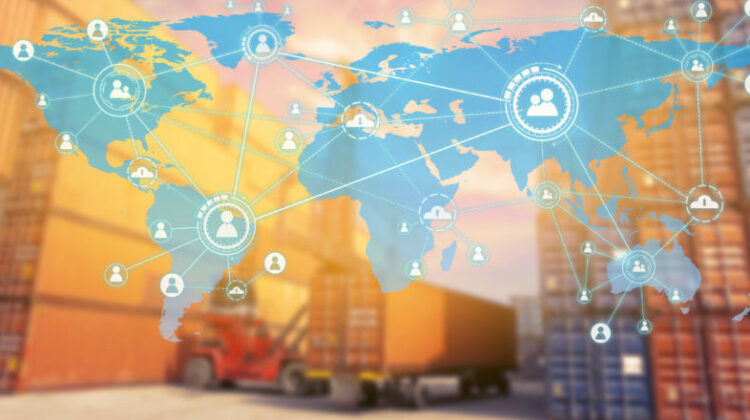
Logistics and supply chain trends for 2021

The sector is now a frontrunner and major driver of not just national and international trade but also the lifeline of smaller businesses, start-ups and entrepreneurs
MUMBAI : The Prime Minister has announced around ₹100 crore for the ‘Gati Shakti’ master plan to accelerate development of transportation and logistics infrastructure in the country. This will help faster ‘reach to market’ for Indian manufacturing sector, which is gearing up to expand, thanks to the ‘Atmanirbhar Bharat’ initiative.
In addition, the National Logistics Policy introduced by the government, is further designed to promote seamless movement of goods through focus on digitisation, process re-engineering, multi-modal transport, EXIM trade, etc., which will further provide an impetus to trade and enhance the Logistics Performance Index of the country.
In the backdrop of the global pandemic, the Indian logistics and supply chain sector evolved from being a support sector to a high impact sector, growing at 10.7 per cent CAGR. While the pandemic and the massive vaccination drive have already led the sector to evolve rapidly so as to meet the numerous challenges, it is now ready to take a giant leap in the coming years, driven by the following trends:
Digitisation and tech adoption: This is one of the most evident developments that has been accelerated largely due to the pandemic. From advancement in warehouse management systems, use of robotics, AI, ML and IoT for inventory management, tracking and order placements, routing schedules etc., have all drastically altered the logistics and supply chain operations, across the country.
The rise of third party logistic service providers have further raised the bar, with introduction of value-driven services that are backed with strong technology-driven innovations, are also redefining the sector.
While e-commerce and online grocery shopping with contactless deliveries and cashless payments are changing the face of ‘direct to home’ and consumer facing logistic operations, the vaccination drives and rise of e-pharmacies, are transforming the pharma and healthcare cold supply chains.
Rise of organised players: With the rise of value-added services, faster digital adoption, cashless and contactless deliveries, and the massive surge in online retail, there was a consolidation of the sector, driven by an increased demand for integrated supply chain services.
The once isolated network of transporters, freight forwarders, warehouse owners and managers and air and ocean freight carriers, now joined hands or merged with larger organised players to enhance market reach, and in turn, enjoy better returns. The sector also witnessed a steep and accelerated rise of start-up entrepreneurs who introduced tech-enabled service platforms, further aiding consolidation of the sector.
Capital influx by external investors: The growth potential of the sector and the massive cumulative impact of supportive government policies have led to a keen interest from private investors and equity funding groups. The wave of technology based logistic start-ups, consolidation of the sector and government decision to allow FDI in the sector have resulted in a massive influx of funds from private players.
In 2020 alone, the Indian logistics and supply chain sector witnessed a total funding of $454.2 million, with early stage start-up’s claiming 45 per cent of the funding. With the consistent and fast-paced growth, this investment is but the starting of a long and steady rise of the sector.
Greener operations: In line with national and international business protocols and rising demand for adopting greener business solutions, a lot of players in the sector are turning to eco-friendly and sustainable operations, that are also smarter, technology driven and cost effective.
From use of electric vehicles and building smarter warehouses with energy-efficient systems, to creating greener cold-supply chains and solar-powered temperature-controlled units, the logistics and supply chain sector is transforming rapidly from a high energy consumer and Co2 emitter to a more conscious and responsible sector with smart and earth-friendly operational preferences. Although not wide spread yet, but an increasing number of both large and small players, are adopting greener solutions.
In line with the above mentioned key growth drivers, a major trend in the Indian logistics and supply chain sector is the strong impetus and focus on developing infrastructure for transport, such that is can offer valuable and customised support to key industries, like agriculture, pharmaceuticals, and manufacturing — sectors earmarked by the government to drive the robust growth of the Indian economy. From being the backbone of a developing economy, the sector is now a frontrunner and major driver of not just national and international trade but also the lifeline of smaller businesses, start-ups and entrepreneurs.
Source : The writer is Executive Director, and Board Member, Jeena & Co


